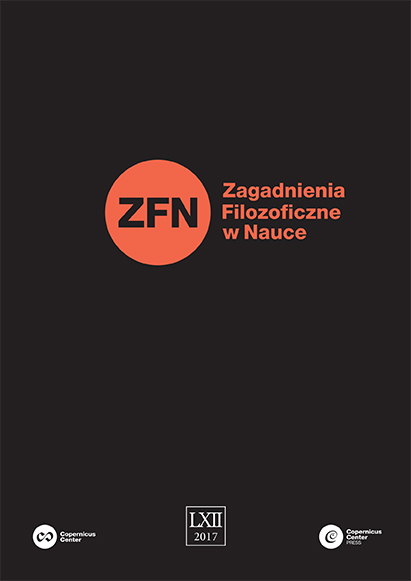
Panorama inna niż wszystkie
Book review of: Panorama współczesnej filozofii, Jacek Hołówka, Bogdan Dziobkowski (ed.), Wydawnictwo Naukowe PWN, Warszawa 2016, pp. 559.
More...We kindly inform you that, as long as the subject affiliation of our 300.000+ articles is in progress, you might get unsufficient or no results on your third level or second level search. In this case, please broaden your search criteria.

Book review of: Panorama współczesnej filozofii, Jacek Hołówka, Bogdan Dziobkowski (ed.), Wydawnictwo Naukowe PWN, Warszawa 2016, pp. 559.
More...
We argue the ontological character of information, along with energy and substance, as well as the structural-phenomenological unity at all scales and levels of reality. We use an interdisciplinary, inductive-deductive methodology, within the broad framework of the naturalistic conception. We start from the current reality, which is the impact of information technology, information networks, virtual reality and artificial intelligence, insisting on the role of information in the gnosiological approach. The preponderance of the logical reductionist positivism in the scientific research and the exaggerated focus on the particle and high energy-physics, made possible that the problem of information be almost completely eluded. Even Shannon and Weaver’s information theory considers information only from a quantitative viewpoint, and only through its relation to entropy and the second law of Thermodynamics. The development in the nonlinear dynamics field of chaos theory, fractal geometry and topology, and especially the spectacular development of information technology in the last two decades, needs a systematic analysis, including the defining of information and its importance in the structuring of reality along with energy and substance. From this perspective, all our concepts, starting from physical reality to psychological imaginary reality, can be coherently understood through the same paradigms, irrespective of whether we are talking about the conservation law, the Euclidean dimension, fractal or topological dimension or the multidimensional processing mechanism through syntactic, semantic, pragmatic and hermeneutic processing of the human and artificial language and knowledge in general. This informational paradigm assumes the existence of a functional, phenomenological, potential background represented by information and which can be mathematically modeled through topology. The semantic emergent logic (semantic emergent topology when applied to the reality structuring) can help to elucidate the old mind-brain dualism, with solving other paradoxes, particularly the theory of emergence.
More...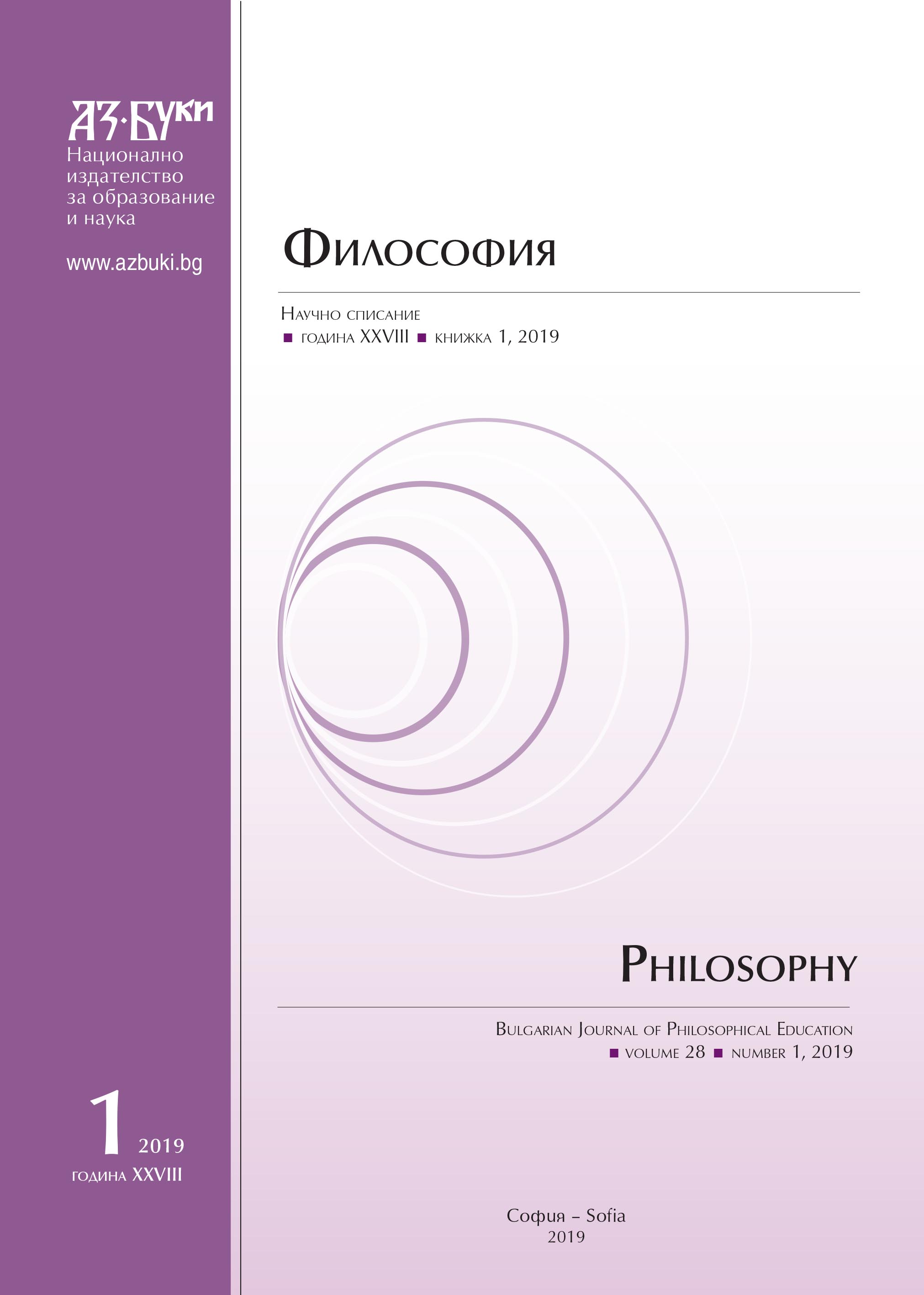
The understanding of human consciousness as a kind of computer is insufficient and even irrelevant, taking into account the modern advances in the development of cognitive science. The author argues that a certain paradigm shift in the understanding of human consciousness and its creative abilities takes place. Consciousness is rather dynamic and autopoietic entity that is embedded into environment and intimately related with the human body. Consciousness is embodied, situated and enactive. A great contribution to this conception of human consciousness (mind) is made by Francisco Varela and his followers. Autopoiesis of consciousness means that it is able to maintain its integrity in the processes of self-organization in the permanently changing environment. An autopoietic activity of consciousness it directed to the search of elements that are missed, it longs for completing integral structures. For these reasons, it is possible to create a new, fresh view on the creative activities of consciousness, if we base our notions on the modern theories of complexity, dynamic chaos and self-organization. In the theoretical frames, chaos acquires a creative image; it is not simply a destroying force. Complex structures emerge in chaos and out of chaos. Chaos is organized and it organizes. When destroying, it builds. Chaos has many facets. Chaos is a way of renovation of complex organizations. A periodical immersion of human consciousness into chaos is a way of stimulation of its cognitive and creative activities.
More...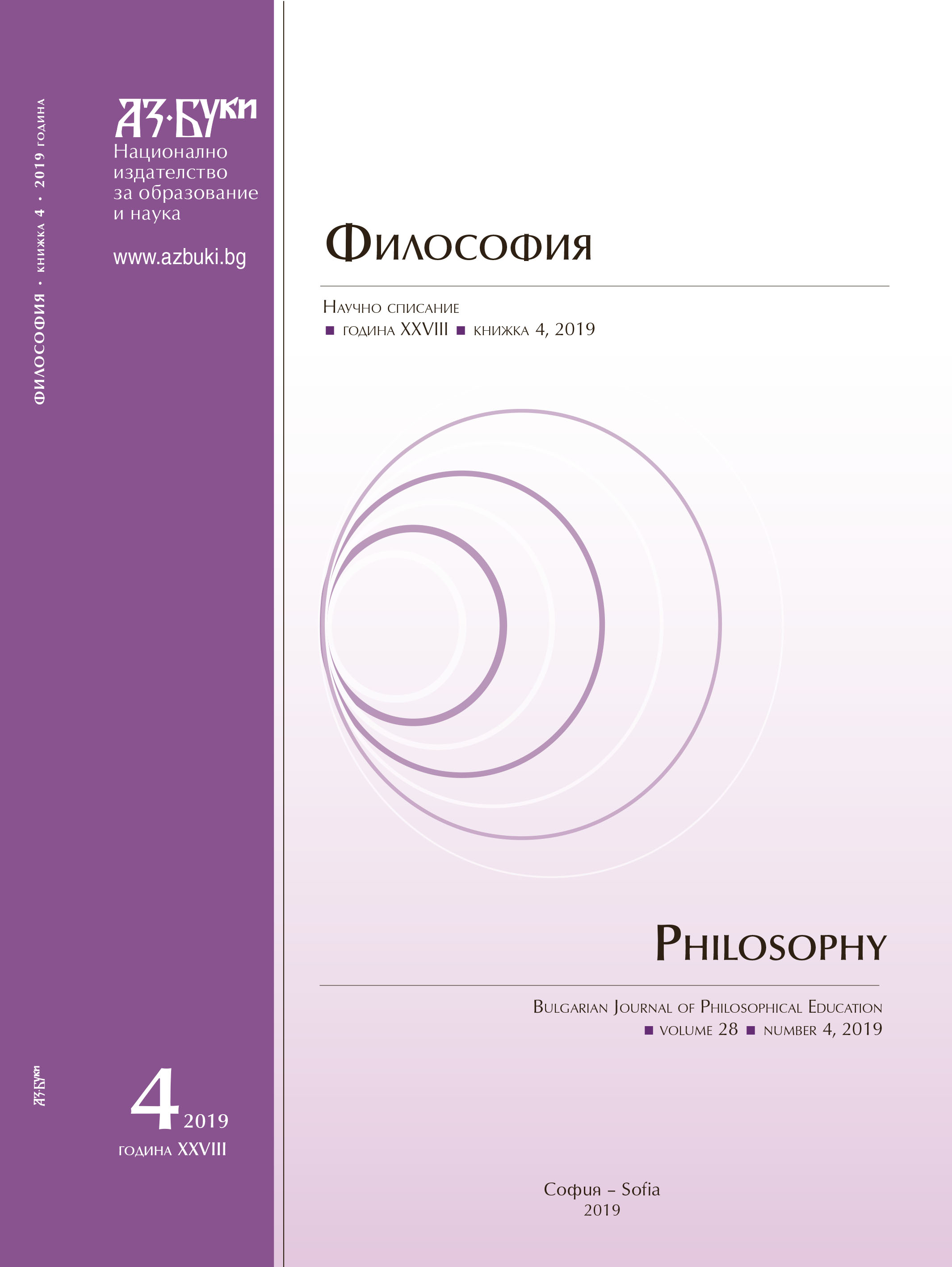
This article presents the essence of psychoanalytic education and its place in modern education and training. Our intention is to put the authors examine its genesis and essence, and to emphasize its usefulness in solving various problems in the process of education and training.
More...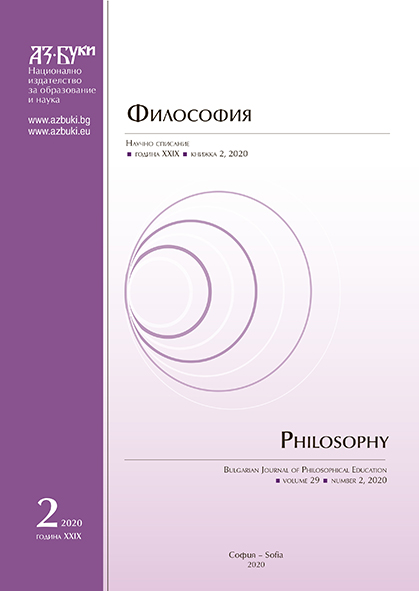
The article presents results of a research of the influence of ego states and parental education on the self-esteem of seventh grade students. The sample includes 339 students from 13 to 15 years. The obtained results represent the dominance of the Natural Child ego-state and Nurturing Parent ego state, manifested by characteristics such as attachment, amiability, adaptability and spontaneity. The self-esteem of the students that took part in the survey is rather average, as higher education degree of the parents defines higher self-esteem in adolescents. The results show significant effect of the Adult ego-state, Natural Child and Nurturing Parent ego- states, along with the education of the father on adolescent self-esteem. The personal characteristics of spontaneity, organization, logical thinking, persistence, conscientious and productivity, along with the education level of the father, slightly but significantly increased the self-esteem of the students. The obtained results are applicable in individual and group work with students to develop their personal qualities and self-confidence, as prerequisites for improving their academic achievement, social relationships and mental well-being.
More...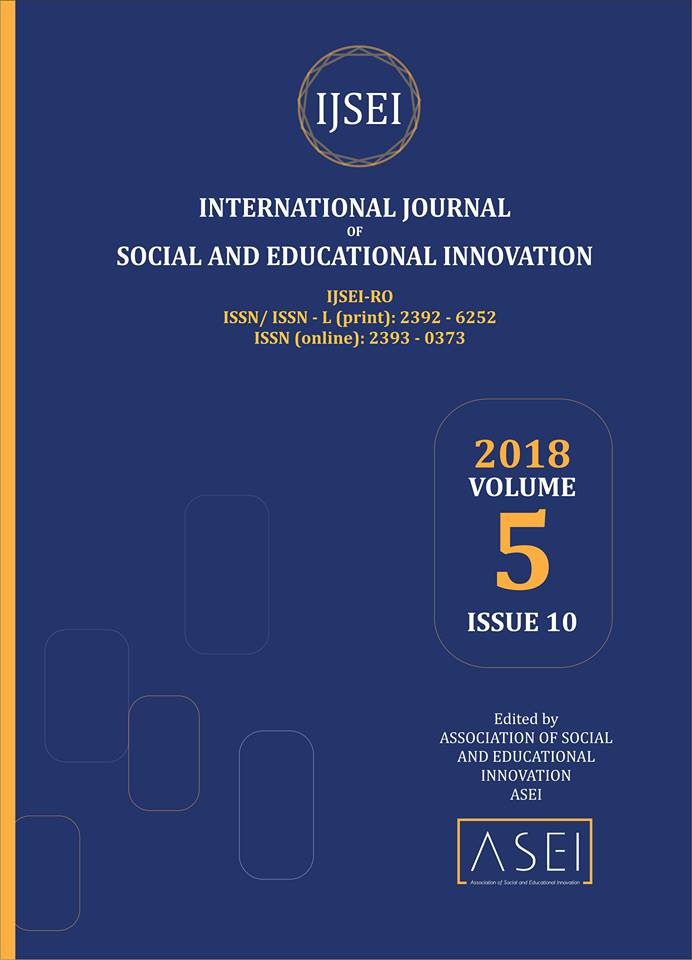
The article aims to explore the social distance of high-school students towards certain vulnerable categories (people with disabilities, those of different religions, those without income, foreigners, refugees, Romani, people infected with HIV, homosexuals), as well as identifying the manner in which these social categories are discriminated against at school and in other public places. In the context of the current study, social distance is expressed through the level of acceptance by the respondents of persons from the aforementioned categories, as neighbours, classmates and friends. Our study shows the students' reluctance to co-exist with certain categories of vulnerable persons by stigmatizing and using social exclusion (homosexuals, Romani, people infected with HIV, immigrants). These aspects draw attention to the need to fight against ethnocentric, xenophobic or homophobic attitudes in school. At the same time, the study shows that the manifestation of intolerant attitudes coincides in many cases with the posture of victim of discriminatory manifestations.
More...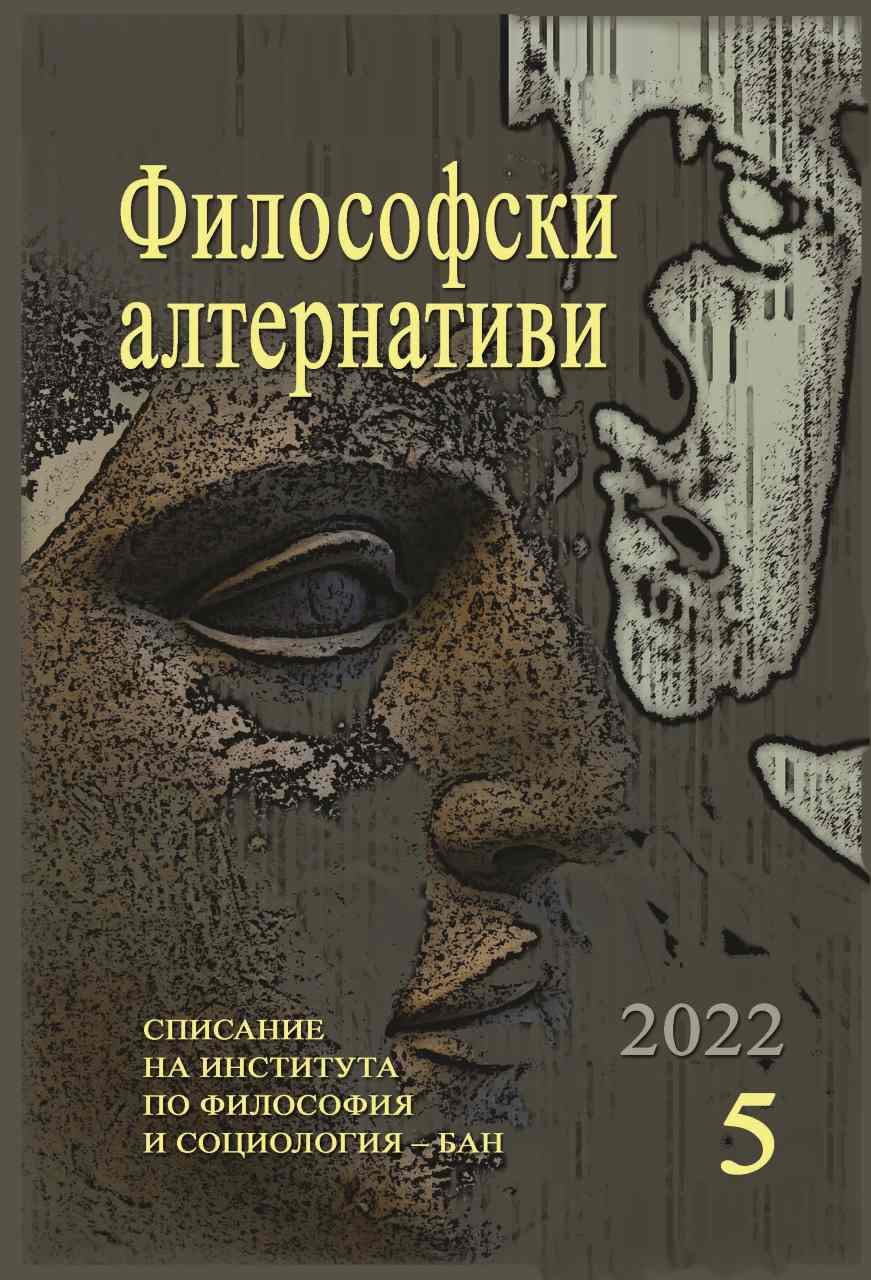
The second article focuses on dialectical logic, biological and spiritual determination, freedom of choice, consciousness and Self-consciousness, as well as on non-evolutionary development. A correlation analysis was carried out, on the one hand: between organic structures, neurophysiology, events of the bodily organism and, on the other hand, mental processes, states and formations, especially free will or creativity, as well as cognitive functions, consciousness and self-conscious Mind. Here consciousness can be a determinant, and information is a mediator between Mind and body.
More...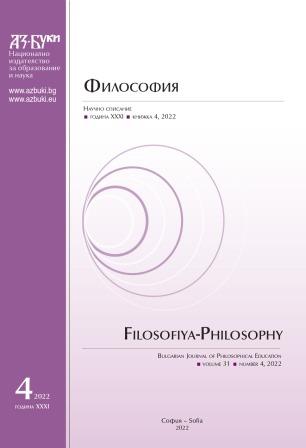
The text outlines some of the main theoretical-methodological procedures in Edmund Husserl's transcendental phenomenology. The first part offers a brief introduction to Husserl's general philosophical project. In the second part, the question of the phenomenological epoché is considered, as a first, negative procedure of the phenomenological reduction. A comparison is also made between the practice of epoché by Husserl and Descartes’ methodical doubt. The third part turns to the different types of reductions and examines the relationship between them.
More...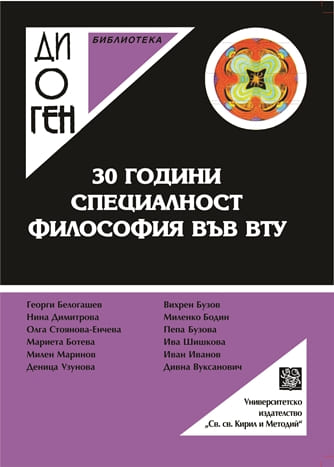
Nowadays, it is increasingly difficult for us to construct the world as a result of the erosion of values in all spheres of society. The normalization of social deprivations, such as justice and security, positions fear in people’s everyday life. In his 𝑅ℎ𝑒𝑡𝑜𝑟𝑖𝑐, Aristotle associates fear with the expected evil that can befall us. In the current situations of a pandemic with a possible restart and of closely positioned hostilities, the media multiply fear on a large scale.
More...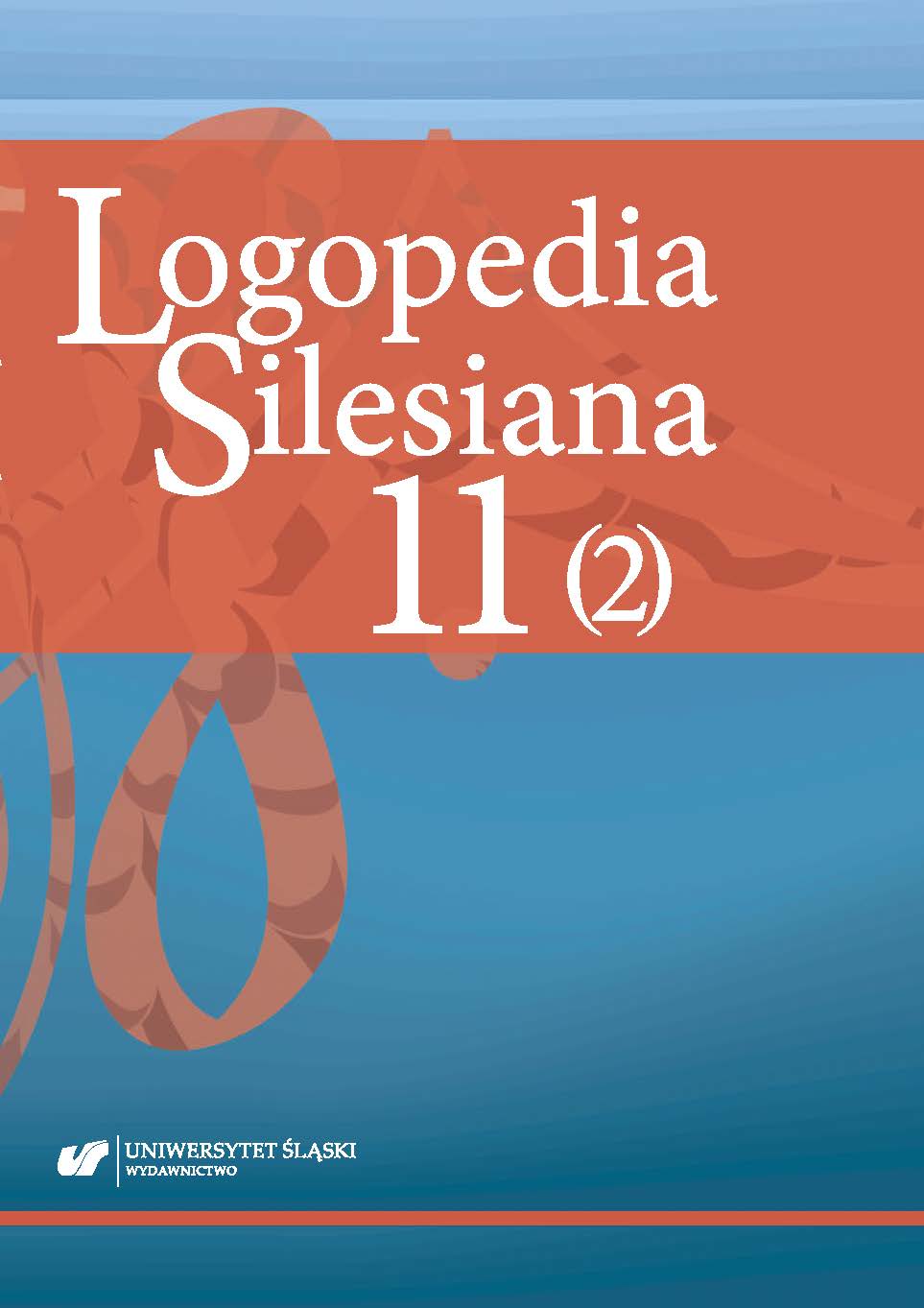
The article is the third part of a study concerned with vocabulary in autism spectrum disorders. The subject of interest in this article is the category of relations and its lexical exponents. The author presents various types of linguistically expressed relations. She discusses how they are represented in the language of people with autism spectrum disorders and devotes a separate fragment to parts of speech. The acquisition of relational concepts and their lexical exponents is a significant development challenge; especially difficult for people with autism. In the category of relations the differences between the vocabularies of typically developing people and people with autistic disorders are the most pronounced. Other conclusions from the analysis carried out are in line with those in the second part of the study concerning the category of things and events.
More...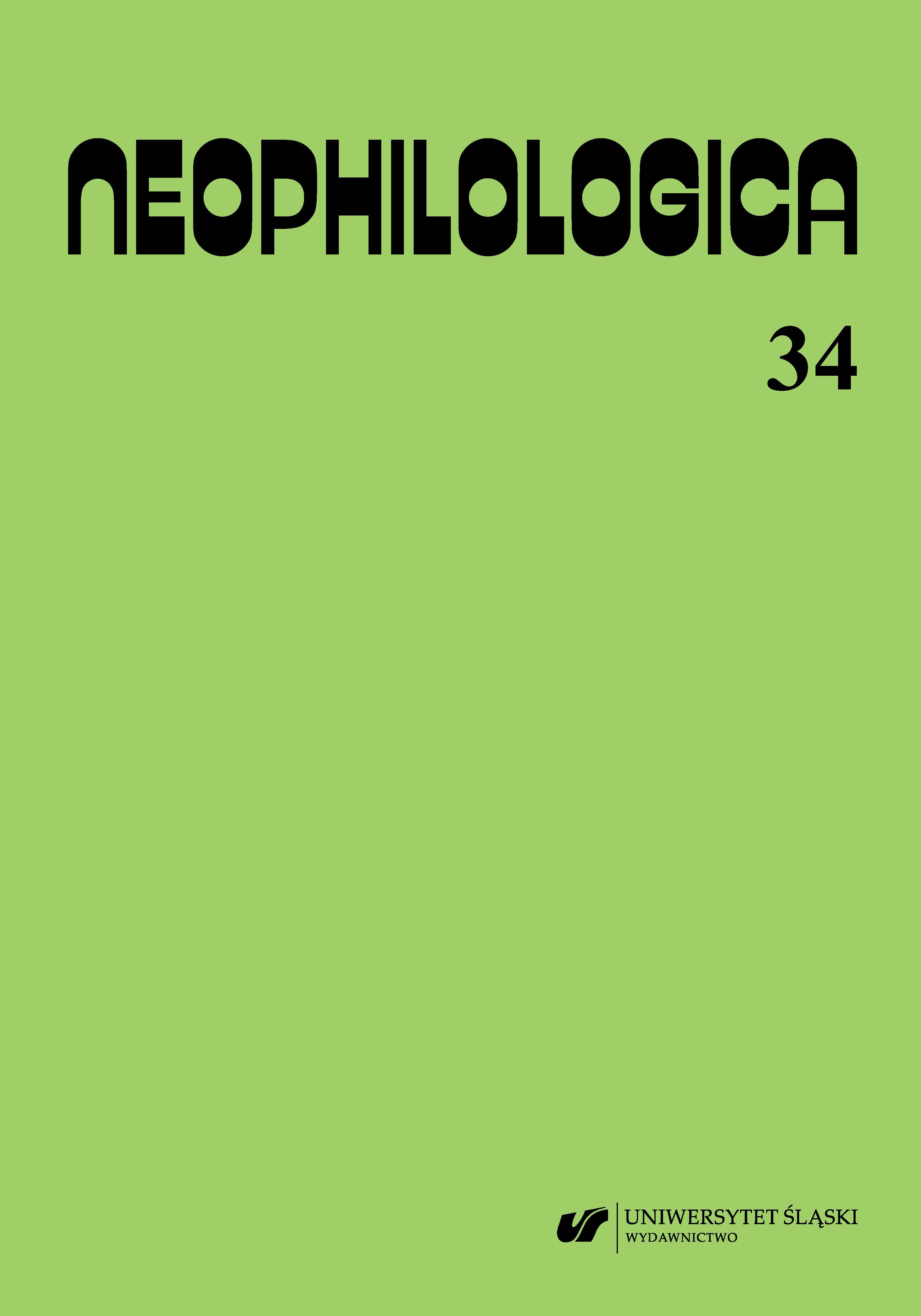
The paper deals with Dontsov’s “phraseological speech” in the framework of cognitive linguistics. The ways of creating partially-authorial (biblical) and authorial (anthropocentric) phraseologisms are discussed and their assignment to different phraseological-semantic microfields is suggested. A number of Dontsov’s phraseologisms are viewed as linguomental pictures of the world that are potentially acceptable for a wider use. Methodologically, the research presents a cluster of general scholarly methods and those used in cognitive linguistics as well as special approaches developed in modern anthropocentric research. Methods of cognitive linguistics are of the utmost importance and include categorizing the phenomena of the objective reality and the interdisciplinary method of interpretation related to the correlation of language data with cultural studies, political science, ethnopsychology and other disciplines. Semantic and contextual analyses are also used as supplementary methods. The potential value of the research is ensured by its contribution to the modern anthropocentric linguistics that aims at studying language through its speaker. Structural-and-logical scheme illustrating the cognitive stages of generating a phraseologism is suggested and the importance of categorization of lingual phenomena is emphasized. Dontsov’s phraseologisms are claimed to be means of exposure of the national Ukrainian lingual picture, symbols of the national worldview, and the prism of the world perception and understanding.
More...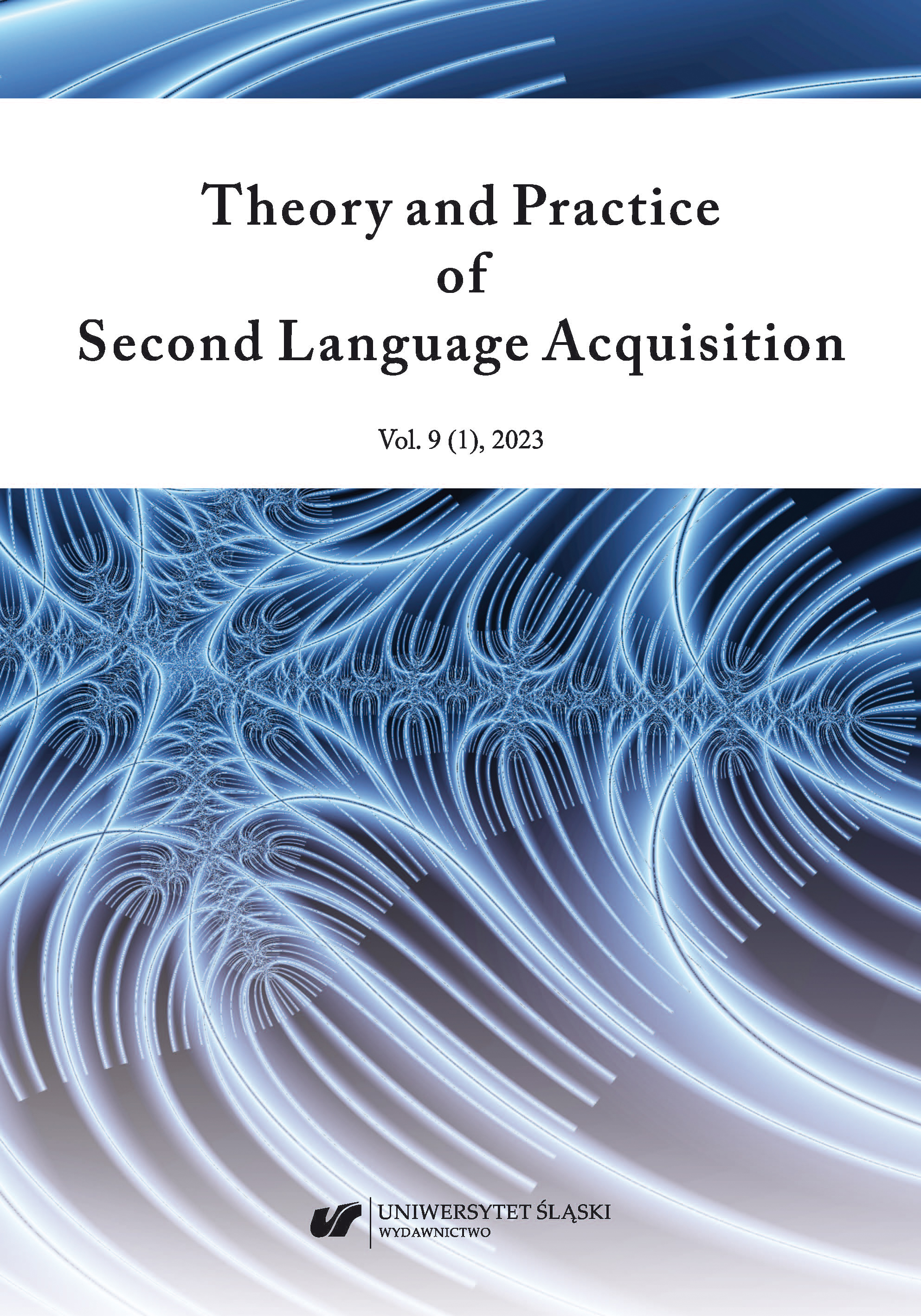
Metacognition is a complex construct widely investigated in SLA studies, also those that focus on reading skills and reading comprehension. Ample research points to metacognition as a strong predictor in developing foreign language reading skills, thus promoting metacognitive strategies in FL education is highly recommended. This paper presents a report on a study in which Polish FL learners kept a diary for a period of one month and wrote comments in reference to the reading classes in which they participated. The data obtained from the students’ narrations allowed to examine the learners’ metacognitive beliefs defined in the study as knowledge about cognition, consisting of three components: person knowledge, task knowledge, and strategy knowledge (Flavell, 1981). The diary data were analyzed in a global narrative way, which enabled the researcher to examine a complex character and a dynamic nature of metacognition in relation to the reading lessons. The findings underline a double role that learner diaries played in this study: as a research tool useful in investigating learners’ metacognition and an effective task that seemed to facilitate the learners’ reflection skills.
More...
Learner-centered approaches to learning and teaching alongside education for sustainable development (ESD) emphasize the education of engaged and active global citizens (UNESCO, 2017). The development of students’ reflective skills and metacognitive strategies is the center of this study that aims at investigating the learner language of a group of adult learners at an upper-intermediate level. It sets out to investigate to what extent learners are able to notice and correct their errors after reflecting on their spoken production. Moreover, it seeks to examine the students’ perception of their self-reflection and their attitude towards using speaking tasks for grammar learning. Comparative error analysis showed that the participants were able to amend 34.6% of total errors. These were made mainly in noun phrases (30% of total errors in Task 1 and 31% in Task 3) and verb phrases (40% of total errors in both tasks). Although no general conclusions could be drawn, the results seem to suggest that after critical, evidence-based reflection, the participants were able to notice and correct some errors, namely, in determination and the use of the past simple. The results of the survey analysis showed that all participants reported on an improved awareness of the gaps in their interlanguage, and all of them considered speaking tasks beneficial to grammar development. The study indicates that carefully planned, repeated speaking tasks might be helpful for learners’ language processing, consolidation of their grammatical knowledge and the improvement of their reflection skills and metacognitive strategies.
More...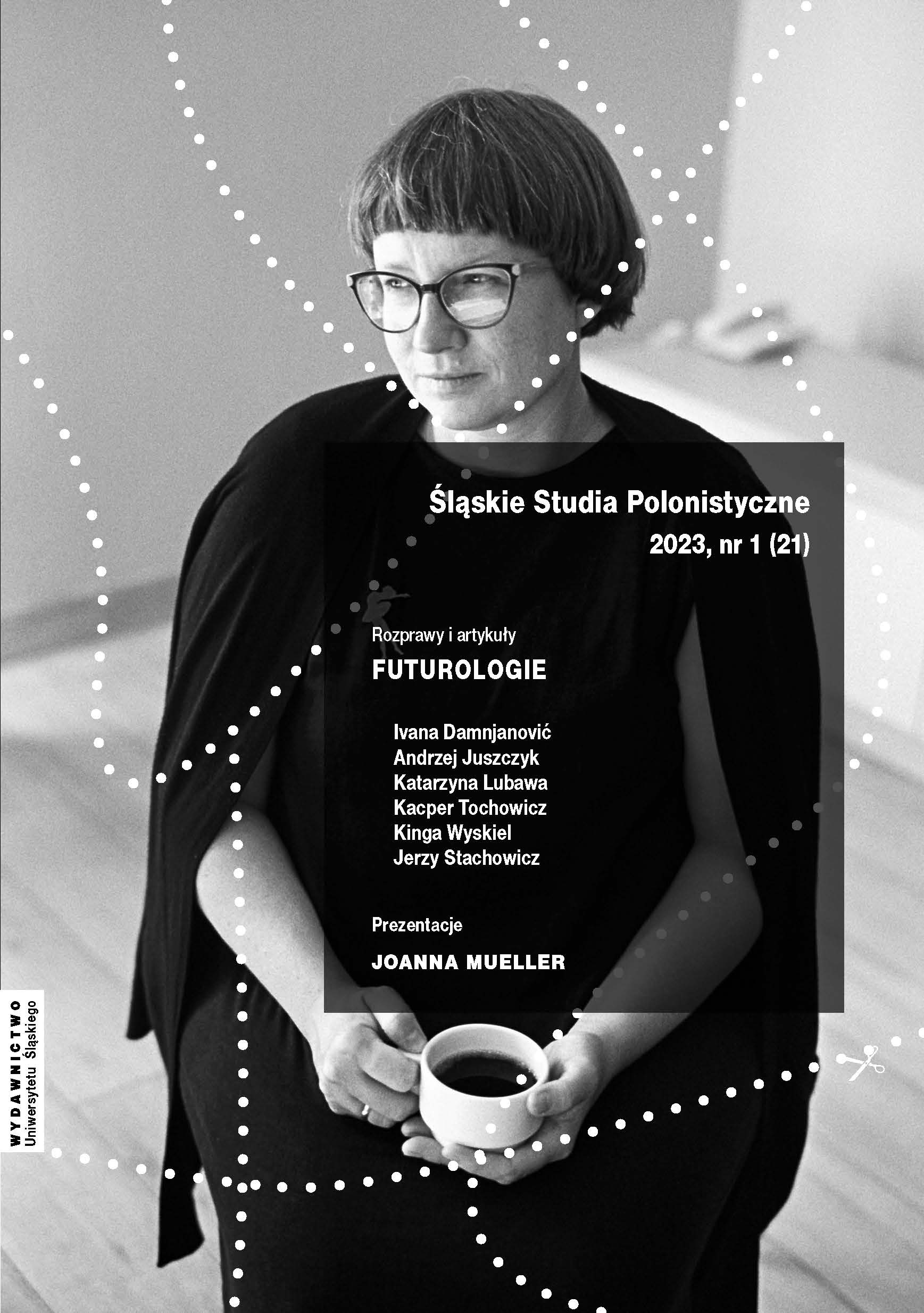
The Culture series created by Scottish author Iain (M.) Banks consists of nine novels, one novella and a couple of short stories situated in the same fictional universe. The eponymous Culture is a space-faring (and spacedwelling) civilization, a conglomeration of several humanoid species and sentient machines, most intellectually powerful beings called The Minds. Technological advances made the Culture a post-scarcity society focused on the maximization of personal freedom. The character of its socio-political structure, however, is somewhat unclear. Based on the differences between its internal and external politics, scholars have mostly placed the Culture within the categories of Utopia and Empire. This is, as the present paper argues, a false dilemma since the Culture is simultaneously both and neither of those. The main argument is that the truly adequate label for the political complexities of the Culture civilization was coined only after the untimely death of the author himself – around 2015, when the far (or, some would say, radical) left activists on the Internet coined the phrase Fully Automated Luxury Gay Space Communism. Using both writings of Marx and Engels on the features of communism and Ollman’s systematization of these features, I will try to show that this is indeed the case.
More...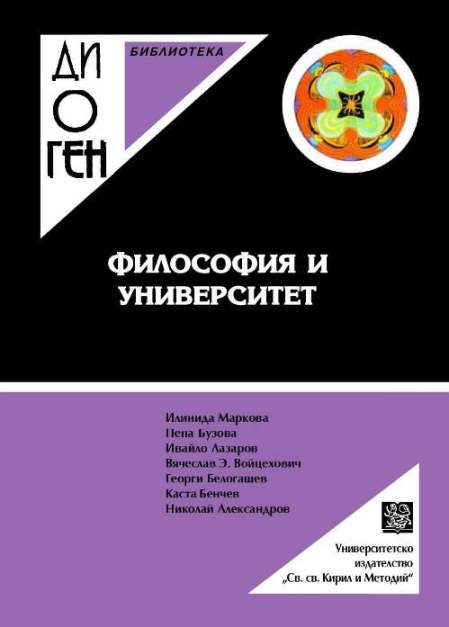
The article starts from the thesis that the ancient East is a unique space, time and donor of the cultural beginning in a world that has lost the humane sense of authentic culture and exists without clarity about the relationship of tension between culture and civilization. The ancient East is an example of quality, and not so much of quantity, of its cultural and religious heritage. Nowhere has the religious managed to dominate everyday experience as it is demonstrated by Eastern teachings. The sense of existentiality of the experience and unity with everything while maintaining a sacred attitude towards the pure springs of spirituality is a great merit of the East. Unique are the rituals, meanings and methods we have available to develop our knowledge in the most profound way – as self-knowledge. Rediscovering the East through a critical and reflexive methodology, today we again have the lost productive potential of the religious and the authentic cultural.
More...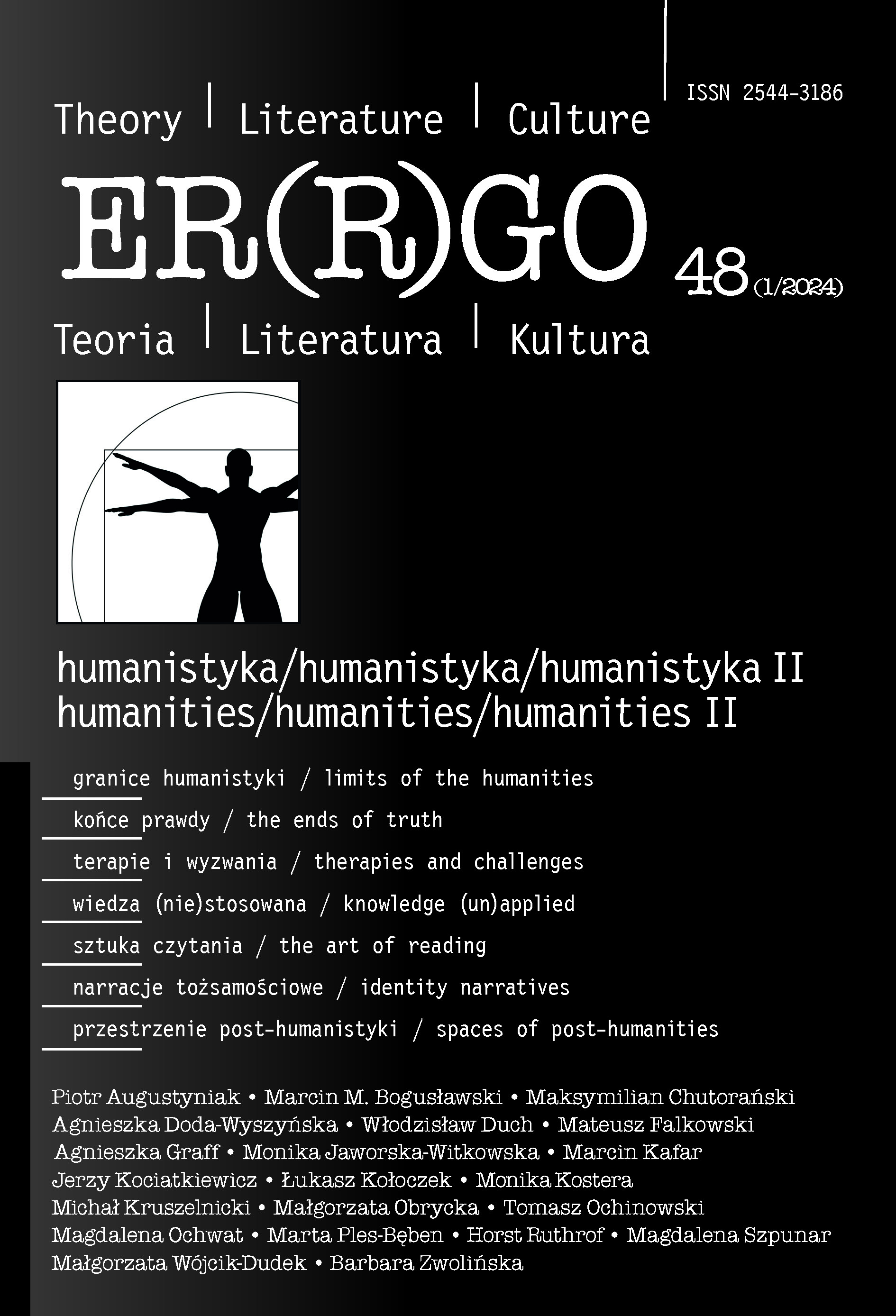
The complexity of cultures in the modern world is beyond human comprehension. Cognitive sciences cast doubts on the traditional explanations based on mental models. The core subjects in the humanities may lose their importance. The humanities have to adapt to the digital age. New, interdisciplinary branches of the humanities emerge. Instant access to information will be replaced by instant access to knowledge. Understanding the cognitive limitations of humans and the opportunities opened by the development of artificial intelligence and interdisciplinary research necessary to address global challenges is the key to the revitalization of the humanities. Artificial intelligence will radically change the humanities, from art to political sciences and philosophy, making these disciplines attractive to students and enabling them to surpass current limitations. The main goal of this article is to alert people working on different branches of humanities that a new wave of very advanced technology is quickly coming, enhancing human intellect in an unprecedented way.
More...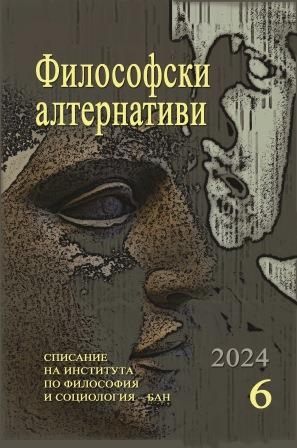
Taking as a starting point the problematization of the debate on values and the understanding of the stages of personality development over the past two centuries, the article aims to dynamize the findings in the context of the formation of values and the integration of personality, by proposing a process-axiological grid for the analysis of values and their role in personality development.
More...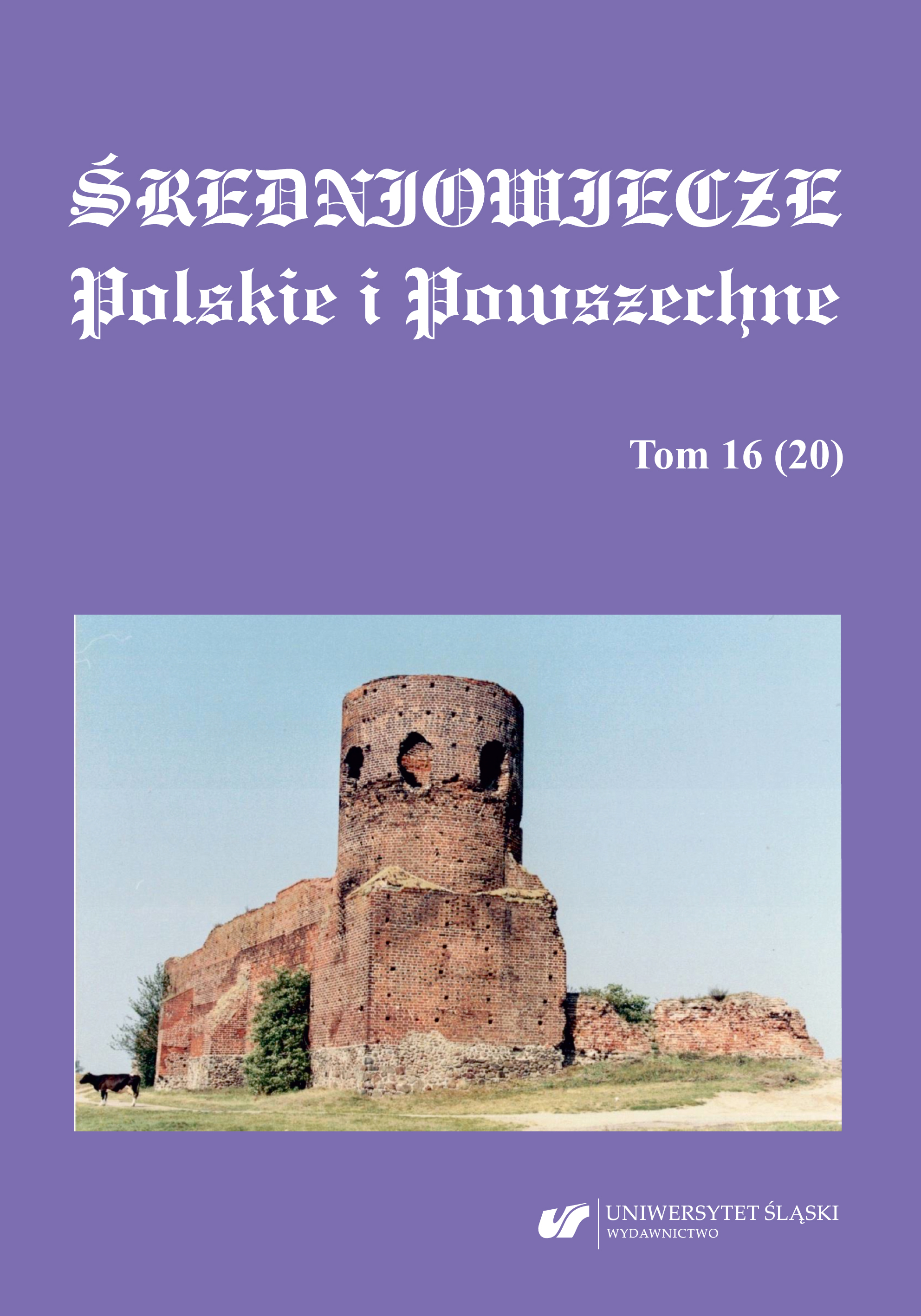
The article analyzes the functioning of a document as an object (artefact) in medieval Europe, against the broad background of changes in the paradigm of research on medieval writing culture, which assumes a multitude of forms of contact with writing, including its perception as a system of signs that could be viewed rather than “read” in the modern sense.The physical aspects of the document, including its writing material, text layout on the page, graphic symbols and objects attached to the document, constitute an issue that goes beyond the boundaries of traditional diplomatics. It encourages researchers to engage in a more intensive dialogue with experts in other auxiliary sciences, primarily with experts in epigraphy, because a large number of documents were produced on hard material, and also in sphragistics, due to the close interaction between the document and the seal in the process of communicating by sight and touch. The article discusses the occasional presence of a document in public space – as an element of the rituals of power, shown at the request of its issuer or recipient, or as an object of viewing in the practice of examining its authenticity – as well as its permanent presence in the form of a text “exposed” in a stone or as a fresco (charta lapidaria). In all situations in question, the specialized or very general knowledge of viewers determined whether and to what an extent they were able to “read” the information encoded in the format and material of the document, in graphic signs, illuminations, and seals.
More...
The author of the present study traces the way the signs used by city dwellers have been defined in Polish historiography so far. Taking the capital city of Krakow as an example, he showed that, like in Prussian centres, they used both gmerk house marks (i.e. bar identification signs) and bourgeois coats of arms (made up of a coat of arms and a shield, where heraldic figures in the strict sense of the word, but also bar signs, were used in parallel). The division outlined in this way allows us to assign the status of a coat of arms to a composition consisting of a coat of arms and a shield. The author also confirmed that the adoption of this graphic pattern (emblem + shield) by the townspeople was the result of their influence and observation of certain products of knightly culture. Moreover, both (knights’ coats of arms) and the other (burghers’ coats of arms) were intended to identify in the first place. In the case of noble coats of arms, at least in Poland, they have become a visual symbol of belonging to a particularly privileged class. So they spoke, as if for the owners, about their legal status. And although they were undoubtedly also used among the townspeople (as the result of some imitation), they did not duplicate all the functions of the nobility coat of arms, and, above all, they did not build the bourgeois (estate) identity.
More...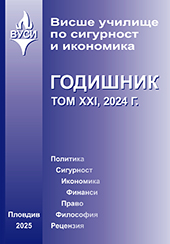
This article examines the main theoretical aspects that define the psychophysical training of security guards as a key component for their effectiveness and professionalism. Psychophysical readiness forms the foundation for an individual's ability to perform various activities under conditions with varying degrees of extremity. Emphasis is placed on the integration of psychological and physical skills necessary to handle professional challenges. To build adequate situational psychophysical readiness that can guarantee effective actions in extreme situations, targeted preparation is required. This training can be organized both in group and individual forms and must be accessible to all security guards. A methodology is applied, including various methods and exercises for mental, physical, and psychophysical influence. One of the most effective and easily applicable methods is psychophysical relaxation. By creating mental models reflecting future situations, adequate psychophysical readiness for action in extreme conditions is formed. A key focus is placed on the method of ideomotor modeling training, based on the concept of the interconnection between the psyche and movements. This approach ensures the formation of the necessary readiness to successfully cope with future extreme situations.
More...